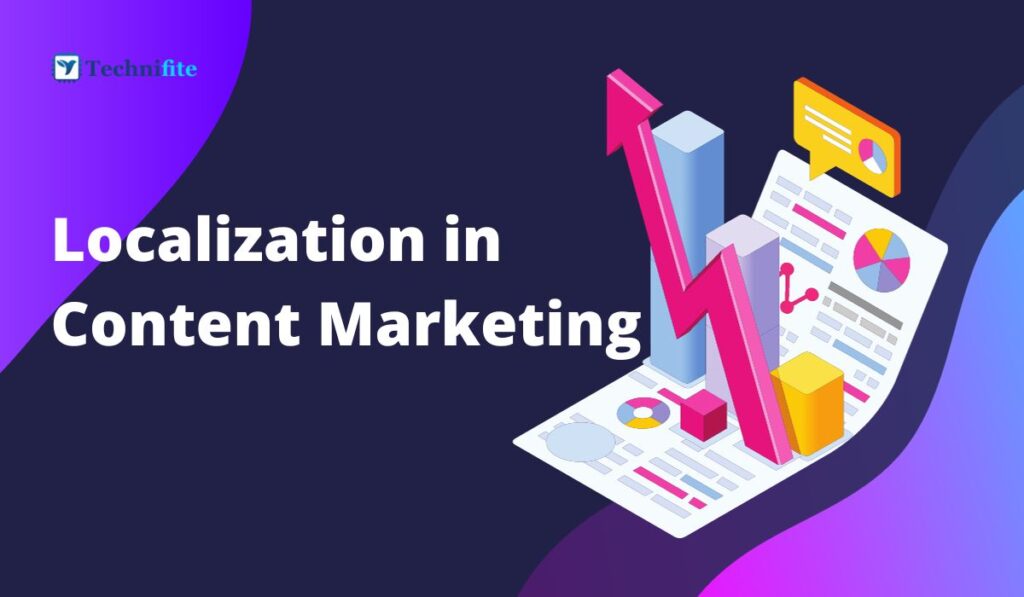In the ever-evolving world of search engine optimization (SEO), staying ahead of the curve is crucial for online success. As the dominant search engine, Google continually refines its algorithms to provide users with the best possible experience. One of the latest updates garnered significant attention is the introduction of Core Web Vitals. Understanding these vital metrics and their impact on SEO is essential for any website owner or digital marketer looking to rank well on Google. In this comprehensive article, we’ll delve deep into what Core Web Vitals are, why they matter, how they influence SEO, and provide an in-depth guide on optimizing your website for improved performance.
What Are Core Web Vitals?
Core Web Vitals are a set of specific website performance metrics that Google uses to evaluate the user experience on a web page. Introduced in May 2020, they are part of Google’s ongoing effort to prioritize websites that offer a better user experience, especially on mobile devices. Core Web Vitals consist of three key metrics:
- Largest Contentful Paint (LCP): LCP measures the loading performance of a web page. It specifically looks at the time it takes for the largest content element, such as an image or text block, to become visible within the user’s viewport. Google considers an LCP of 2.5 seconds or less as good user experience.
- First Input Delay (FID): FID measures the interactivity of a page. It assesses the delay between a user’s first interaction, such as clicking a link or button, and the browser’s response to that action. An FID of 100 milliseconds or less is considered excellent.
- Cumulative Layout Shift (CLS): CLS evaluates visual stability. It measures how often elements on a page unexpectedly shift, causing users to click on the wrong elements or lose their place while reading content. A CLS score of 0.1 or less is considered good.
Why Core Web Vitals Matter for SEO
Google has explicitly stated that Core Web Vitals are a significant ranking factor. This means that websites with better Core Web Vitals scores are more likely to rank higher in search results. Here’s why these metrics matter for SEO:
- User Experience Improvement: Core Web Vitals are directly linked to the user experience. When users have a positive experience on your website, they are likelier to stay longer, engage with your content, and convert into customers. Google rewards websites that prioritize user satisfaction.
- Mobile-First Indexing: With the increasing use of mobile devices for internet browsing, Google has shifted to mobile-first indexing. This means that Google predominantly uses the mobile version of the content for ranking and indexing. Since Core Web Vitals focus on mobile user experience, they are crucial for maintaining or improving search rankings.
- Competitive Advantage: As Google continues to emphasize user experience, websites that invest in optimizing for Core Web Vitals gain a competitive advantage. You can secure higher search rankings and attract more organic traffic by outperforming competitors in these metrics.
Understanding Core Web Vitals in Detail
To fully grasp the significance of Core Web Vitals, let’s break down each of the three metrics:
1. Largest Contentful Paint (LCP)
LCP measures the loading performance of a web page. It specifically focuses on the largest content element on the user’s screen. This could be an image, video, or a significant text block. A fast LCP is essential because it directly impacts the user’s perception of your site’s speed and responsiveness.
Why LCP Matters for SEO:
- LCP is a critical indicator of how quickly users can access the most important content on your page. Slow loading times can lead to high bounce rates, negatively impacting your SEO.
- Google prioritizes websites that load quickly, especially on mobile devices, where users expect near-instantaneous access to content.
2. First Input Delay (FID)
FID measures the interactivity of a web page. It assesses the delay between a user’s first interaction, such as clicking a link or button, and the browser’s response to that action. A fast FID ensures that users can interact with your site without frustrating delays.
Why FID Matters for SEO:
- A quick FID is crucial for providing a seamless user experience. Sites with slow FID may lead to users leaving before they can engage with your content or complete desired actions.
- Google aims to prioritize sites that are responsive and user-friendly, and FID is a critical component of this.
3. Cumulative Layout Shift (CLS)
CLS evaluates visual stability. It measures how often elements on a web page unexpectedly shift, causing users to click on the wrong elements or lose their place while reading content. A low CLS score ensures that users can navigate your site without disruptions.
Why CLS Matters for SEO:
- A low CLS score reduces user frustration and improves the overall user experience. Users are more likely to engage with and stay on sites that provide a visually stable environment.
- Google recognizes the importance of visual stability in user satisfaction and rewards sites that achieve it.
How to Optimize for Core Web Vitals
Now that you understand the significance of Core Web Vitals let’s explore some practical steps to optimize your website for improved performance and better SEO rankings:
1. Page Speed Optimization
To improve LCP and FID, optimise your page’s loading speed. Here are some key strategies:
- Compress Images: Use efficient image formats (e.g., WebP) and compress images to reduce file sizes without sacrificing quality.
- Leverage Browser Caching: Implement browser caching to store static resources on users’ devices, allowing for quicker loading on return visits.
- Minimize JavaScript: Minimize large JavaScript files and consider deferred loading for non-essential scripts.
- Content Delivery Network (CDN): Utilize a CDN to distribute your website’s content across multiple servers worldwide, reducing latency for users in different regions.
2. Responsive Design
Ensure your website is mobile-responsive and the layout adjusts seamlessly to different screen sizes and orientations. This reduces the likelihood of layout shifts (CLS). Key considerations include:
- Mobile-First Design: Prioritize designing for mobile devices first, ensuring a smooth transition to larger screens.
- Viewport Meta Tag: Include the viewport meta tag in your HTML to control how your site scales on different devices.
- Testing: Regularly test your website on various devices and browsers to ensure a consistent and responsive design.
3. Minimize Render-Blocking Resources
Identify and reduce render-blocking resources such as CSS and JavaScript files. Opt for asynchronous loading to prevent these resources from blocking page rendering. Key strategies include:
- Critical CSS: Inline or load critical CSS inline to expedite initial rendering, and load non-critical CSS asynchronously.
- JavaScript Loading: Implement asynchronous or deferred loading for JavaScript resources to prevent them from blocking page rendering.
- Code Splitting: Split large JavaScript files into smaller, more manageable pieces to improve loading times.
4. Monitor and Test
Regularly monitor your website’s Core Web Vitals using tools like Google Search Console, PageSpeed Insights, and other performance testing tools. Continuously test your site’s performance and address any issues promptly. Key actions include:
- Regular Audits: Conduct regular audits to identify and resolve issues affecting Core Web Vitals metrics.
- Benchmarking: Set benchmarks for your website’s Core Web Vitals performance and track improvements over time.
- Performance Budgets: Establish performance budgets to ensure that new content and features do not negatively impact vital metrics.
5. Content Optimization
While not directly related to Core Web Vitals, remember that high-quality, relevant content is still vital for SEO. Engaging content keeps users on your site longer, improving user experience indirectly. Key content optimization strategies include:
- Quality Content: Create informative, well-structured, and engaging content that addresses user needs and interests.
- Internal Linking: Implement internal linking strategies to guide users to relevant content and improve site navigation.
- Mobile Optimization: Ensure that content is displayed correctly and remains readable on mobile devices.
Conclusion
Core Web Vitals have become a pivotal aspect of SEO, representing Google’s commitment to delivering better user experiences. Prioritizing these metrics is no longer optional for website owners and digital marketers. By understanding what Core Web Vitals are, why they matter, and how to optimize for them, you can enhance your website’s SEO performance, improve rankings, and provide a better user experience for your audience.
As SEO continues to evolve, keeping pace with Google’s expectations ensures that your website remains competitive and visible in the ever-expanding digital landscape. Remember that SEO is an ongoing process, and staying informed about the latest trends and updates is key to maintaining and improving your website’s search engine rankings. Start optimizing your Core Web Vitals today, and you’ll be well on your way to SEO success in the modern digital landscape.
Frequently Asked Questions (FAQs)
What if my website’s Core Web Vitals scores are currently poor?
If your website’s Core Web Vitals scores are subpar, it’s crucial to take action. Begin by identifying the specific issues causing poor performance, such as slow loading times or layout shifts. Then, follow best practices for optimization, which include improving page speed, minimizing render-blocking resources, and ensuring a mobile-responsive design. Regularly monitor your site’s performance and make iterative improvements.
How often should I monitor my website’s Core Web Vitals?
Monitoring your Core Web Vitals regularly is essential to maintaining good performance. Aim to check your metrics at least monthly or after significant updates to your website. Google Search Console and tools like PageSpeed Insights can help you track changes and identify areas for improvement.
How often should I monitor my website’s Core Web Vitals?
Monitoring your Core Web Vitals regularly is essential to maintaining good performance. Aim to check your metrics at least monthly or after significant updates to your website. Google Search Console and tools like PageSpeed Insights can help you track changes and identify areas for improvement.
Can third-party widgets or scripts negatively impact Core Web Vitals?
Yes, third-party widgets and scripts can impact Core Web Vitals. When integrating third-party elements like social media widgets or analytics scripts, be cautious about their impact on loading times and page stability. Opt for asynchronous loading when possible, and regularly assess their influence on your website’s performance to mitigate any negative effects.
Are Core Web Vitals only important for Google rankings, or do other search engines also consider them?
While Google is the most prominent search engine, other search engines like Bing prioritize user experience. Although they might not use Core Web Vitals as a specific metric, the principles of improving user experience, fast loading times, and a mobile-friendly design are universally valuable for SEO.
Do Core Web Vitals affect my website’s rankings immediately?
Google announced Core Web Vitals as a ranking factor in 2020 but mentioned that the full rollout would occur gradually. While they greatly influence rankings, other factors like content quality and relevance still play a significant role. Nevertheless, optimizing for Core Web Vitals is a proactive step to improve user experience and stay competitive in the long run.


